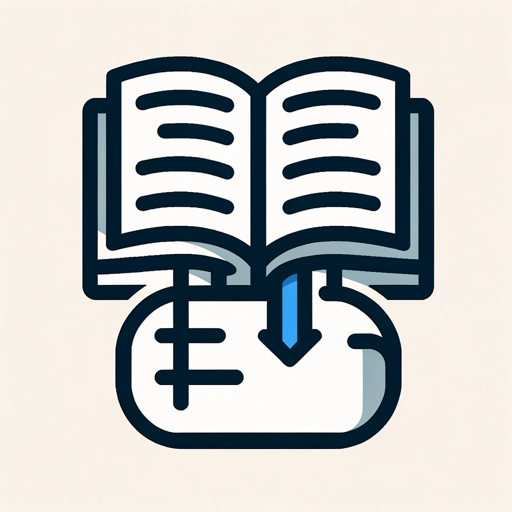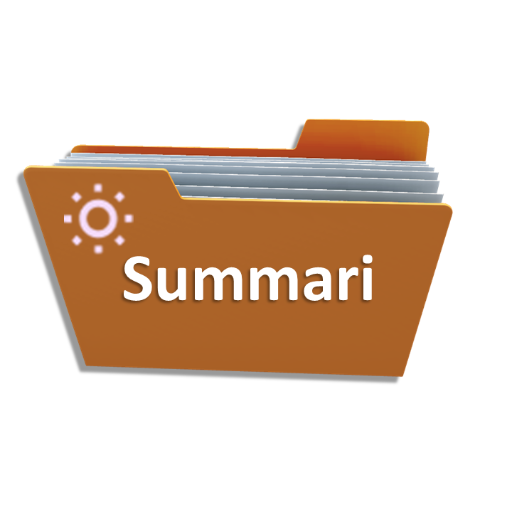Document Summarizer-AI-powered document summarizer
AI-powered summaries for medical documents.
Summarize this clinical note, ensuring patient privacy:
Condense this medical report, focusing on confidentiality:
Create a brief, private summary of this clinical encounter:
Summarize this document while maintaining patient confidentiality:
Related Tools
Load More
Summarize PDF
A tool for summarizing academic PDFs for university students.

Summarize!
Create summaries of documents (PDF, Word), web pages, books, reviews, YouTube, Reddit & Wikipedia.

Text Summarizer
I distill text into clear, concise summaries.

Summary Pro
Expert at summarizing documents.

Summarizer
Summarize Chapters and Articles for Intuitive Absorption

Page Summarizer📄
Summarize your pages, articles, posts, conversations, or passages in a clear, concise, and reader-friendly manner📄
20.0 / 5 (200 votes)
Introduction to Document Summarizer
The Document Summarizer is a specialized AI tool designed to analyze and concisely summarize medical documents while prioritizing confidentiality and brevity. It is built to deliver one-line summaries of clinical notes and diagnostic studies by extracting key details such as clinical specialty, provider name, clinical problems, findings, and plans of care. This tool ensures patient privacy by not storing or retaining any patient data. For example, if a clinician uploads a patient's encounter note, the Document Summarizer will provide a brief summary like '07/10/2024 - Cardiology - Dr. Smith - Hypertension, high cholesterol - BP 140/90, LDL 160 - Continue medications, follow-up in 3 months.'

Main Functions of Document Summarizer
Summarizing Clinical Encounter Notes
Example
A cardiologist’s note summarizing a patient’s visit could be '06/15/2024 - Cardiology - Dr. Jones - Coronary artery disease - Stable angina, normal ECG - Maintain current therapy, reassess in 6 months.'
Scenario
This function is useful for quickly conveying the essence of a clinical visit to other healthcare providers or for inclusion in referral letters.
Summarizing Diagnostic Studies
Example
For a diagnostic study, the summary might read '07/10/2024 - Echocardiogram - Left ventricular hypertrophy, ejection fraction 55% - Recommend follow-up in 1 year.'
Scenario
This is helpful for clinicians reviewing a patient’s history or when communicating with specialists who need a quick overview of previous test results.
Ensuring Confidentiality
Example
When processing a document, any patient identifiers are automatically excluded, ensuring summaries like '07/10/2024 - Oncology - Dr. Lee - Breast cancer, stage II - Tumor resection successful, adjuvant chemotherapy planned.'
Scenario
This is critical in maintaining patient privacy, especially when sharing information among different healthcare professionals or departments.
Ideal Users of Document Summarizer
Healthcare Providers
Physicians, nurses, and other healthcare professionals benefit from quick, concise summaries of patient encounters and diagnostic tests, enabling efficient information sharing and decision-making in clinical settings.
Medical Researchers
Researchers can use summarized data from clinical notes and studies for retrospective analyses and meta-studies without dealing with extensive raw data, facilitating quicker data processing and interpretation.

Guidelines for Using Document Summarizer
1
Visit aichatonline.org for a free trial without login, also no need for ChatGPT Plus.
2
Upload your medical document in PDF, TXT, or DOCX format.
3
Select the type of summary you need (clinical encounter, diagnostic study, etc.).
4
Review the generated summary, ensuring it meets your requirements and is free from patient-identifying information.
5
Download or copy the summary for your records or further use.
Try other advanced and practical GPTs
Document Translator Pro
AI-Powered Document Solutions.

Document Generator
AI-Powered Document Creation Tool

Digital Marketing Pro
Empowering your digital marketing with AI-driven insights.

YEEMA - Your eCommerce Email Marketing Agency AI
AI-driven email marketing for eCommerce success

magazine articles
AI-Powered Magazine Article Assistant

Architectural 3D Rendering Enabler
AI-driven 3D architecture at your fingertips

Document Reader
AI-powered document insights.

Review any document
AI-Powered Document Review

Large Document Reviewer
AI-Powered Review for Your Documents

Document Summarizer by Reportifi.ai
AI-Powered Summaries for Complex Documents

Document Translator
AI-powered Document Translation Made Easy

Document Scanner
AI-driven summaries for any document.

- Clinical Notes
- Treatment Plans
- Patient Records
- Medical Summaries
- Diagnostic Reports
Detailed Q&A about Document Summarizer
What types of documents can be summarized?
Document Summarizer supports PDF, TXT, and DOCX files, focusing on medical documents such as clinical notes, diagnostic reports, and treatment plans.
How does Document Summarizer ensure confidentiality?
The tool excludes patient-identifying information from summaries and does not store, retain, or make accessible any patient data.
Can I customize the length of the summary?
Yes, users can adjust the summary length based on their preferences, while maintaining a focus on privacy, confidentiality, and brevity.
What are common use cases for Document Summarizer?
Common use cases include summarizing clinical encounter notes, diagnostic studies, and treatment plans for quick review, record-keeping, or communication with other healthcare providers.
Are there any prerequisites for using the tool?
No specific prerequisites are required; however, having a clear understanding of the document's content and the type of summary needed will enhance the experience.